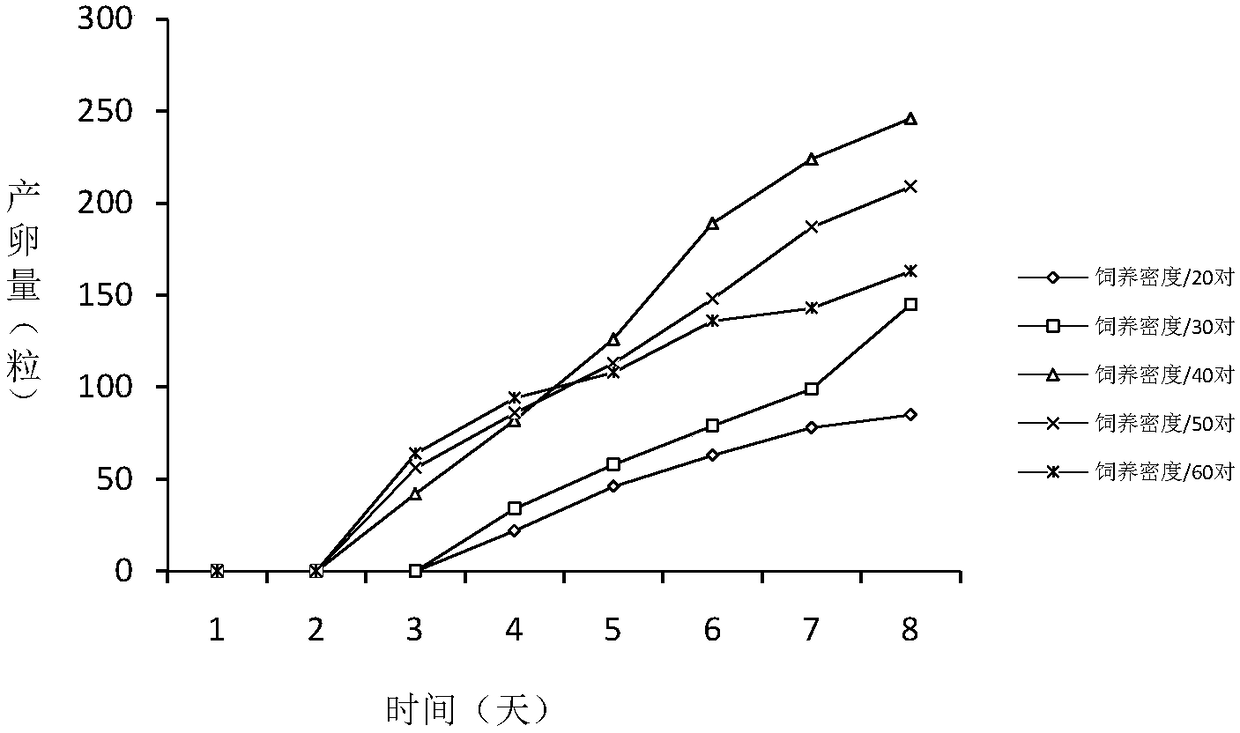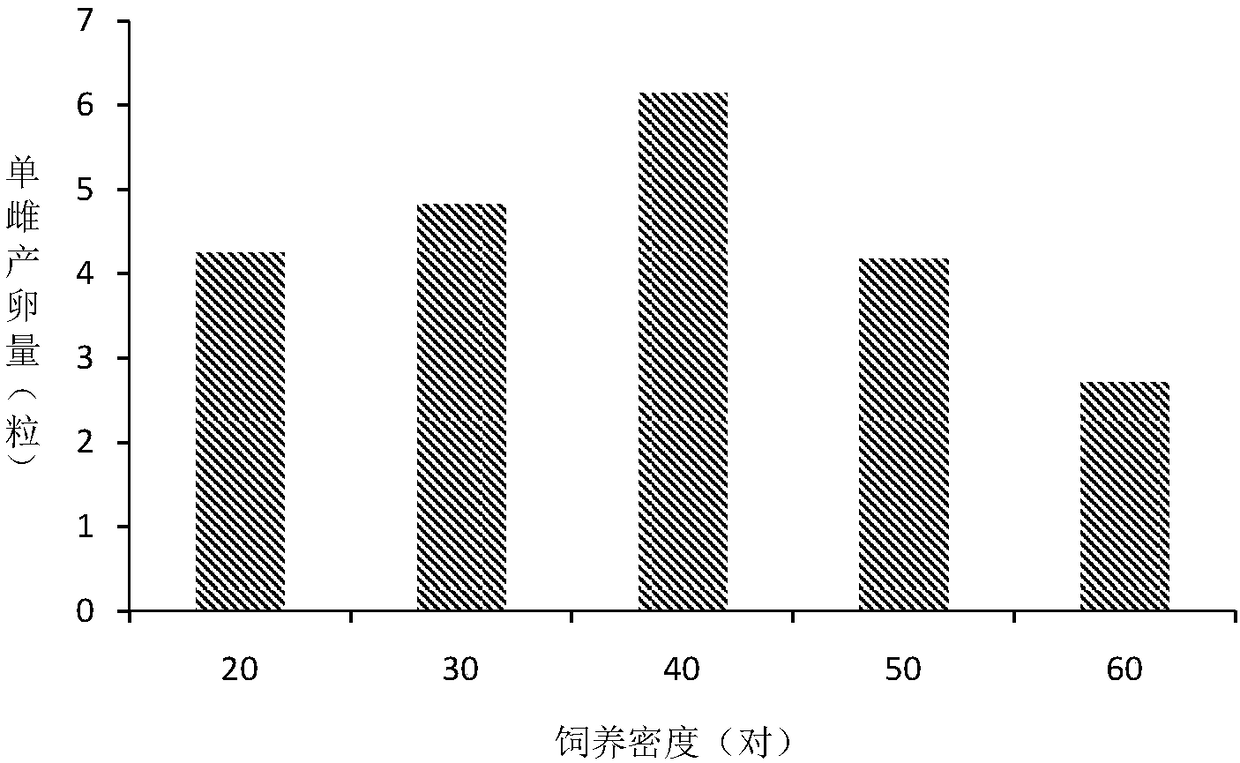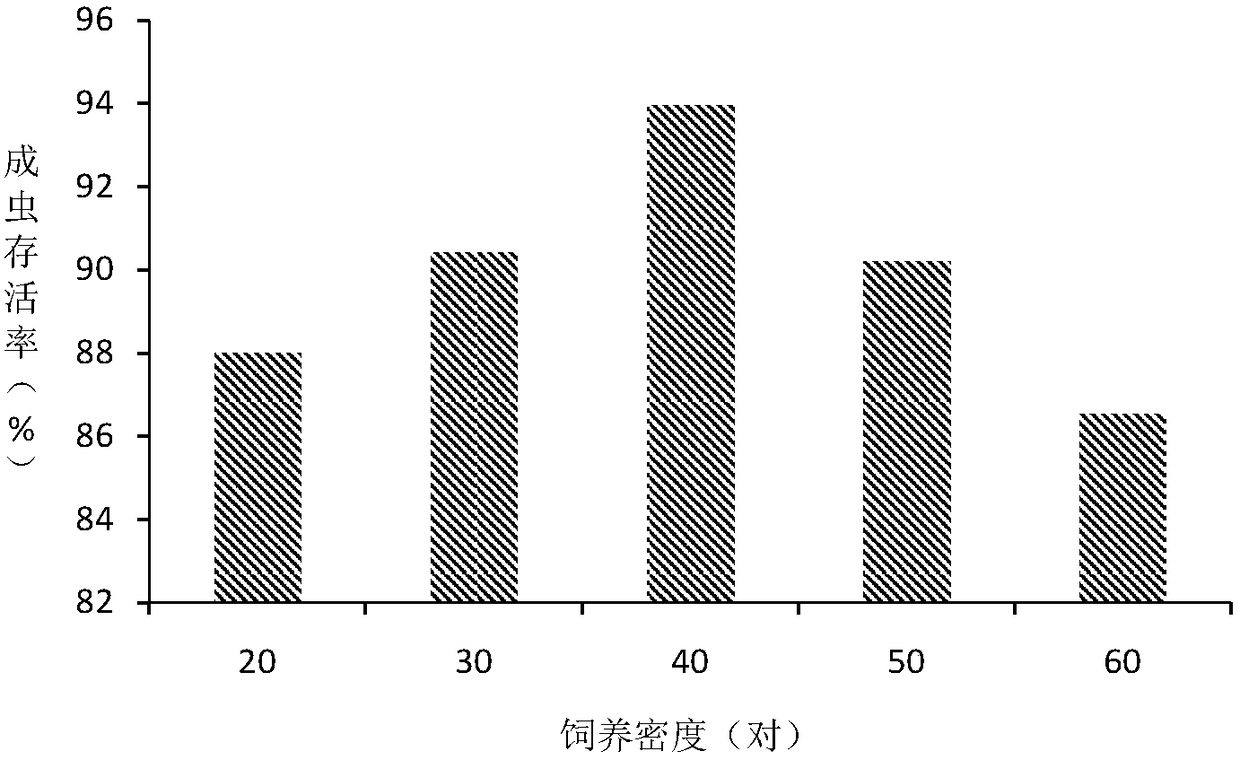The Artificial Propagation Method of Dahma Wax Armor
It is a technology of artificial breeding and artificial reproduction, which can be used in animal husbandry and other directions to solve problems such as difficulty in controlling pests, labor and time consuming, and environmental pollution, and achieve the effects of reducing adult mortality, reducing mortality, and reducing time in the middle.
- Summary
- Abstract
- Description
- Claims
- Application Information
AI Technical Summary
Problems solved by technology
Method used
Image
Examples
Embodiment 1
[0061] Embodiment 1 The adult beetle of the maggot lays eggs
[0062] The room temperature is 19°C and the humidity is 75%.
[0063] Put 2 / 3 of the sawdust in a circular culture box (diameter×height=10cm×1cm), and mix the sawdust with distilled water until no water drops can be squeezed out by hand. Place 80 adults of the large beetle beetle (40 pairs of male and female adults) and 1 larvae of the red beetle in the sawdust, cover the box lid, put it in a dark place, and replace it with a fresh host every day.
[0064] The eggs of the big scorpion are oblong, white, translucent, and less than 2mm. The number of eggs is counted every day. When the number of eggs in the culture box is about 100, the adults are picked out and replaced with a new culture box.
[0065] Using the same feeding conditions and methods, adjust the stocking density, and then set up 20 pairs of male and female adults of S. spp. Pairs of male and female adults of Damen wax armor. According to the 8-day e...
Embodiment 2
[0070] Embodiment 2 Raising of larvae
[0071] The room temperature is 19°C and the humidity is 75%.
[0072] Continue embodiment 1 to carry out follow-up larva rearing, after the eggs hatch into small larvae, put into 4 Tenebrio molitor pupae in the box every day, change fresh feed every day, allow it to get food Tenebrio molitor pupae to 2 instars in the circular culture box.
[0073] Then they were removed and raised in polystyrene cuboid boxes (length×width×height=18cm×10cm×4cm) with sawdust. The sawdust is placed at a height 8 mm from the top of the inner edge of the box. The larvae of 5 circular culture boxes are put into each cuboid box, and fresh feed is changed every day.
[0074] Counting from the egg hatching, 20-22 days later, the larvae mature.
Embodiment 3
[0075] Example 3 Larval pupation and eclosion
[0076] The room temperature is 19°C and the humidity is 75%.
[0077] Continue to embodiment 2 to carry out pupation and eclosion. The pupation sand is sterilized at 150°C for 2 hours, then wetted with sterilized water, and left for 1 day before being used for pupation.
[0078] Cover the pupation sand in the eclosion box (cuboid box: length×width×height=18cm×10cm×4cm; polystyrene material).
[0079] After the mature larvae were put into the eclosion box for 40-50 days, the eclosion adults crawled out of the sandbox.
PUM
 Login to View More
Login to View More Abstract
Description
Claims
Application Information
 Login to View More
Login to View More - R&D
- Intellectual Property
- Life Sciences
- Materials
- Tech Scout
- Unparalleled Data Quality
- Higher Quality Content
- 60% Fewer Hallucinations
Browse by: Latest US Patents, China's latest patents, Technical Efficacy Thesaurus, Application Domain, Technology Topic, Popular Technical Reports.
© 2025 PatSnap. All rights reserved.Legal|Privacy policy|Modern Slavery Act Transparency Statement|Sitemap|About US| Contact US: help@patsnap.com



